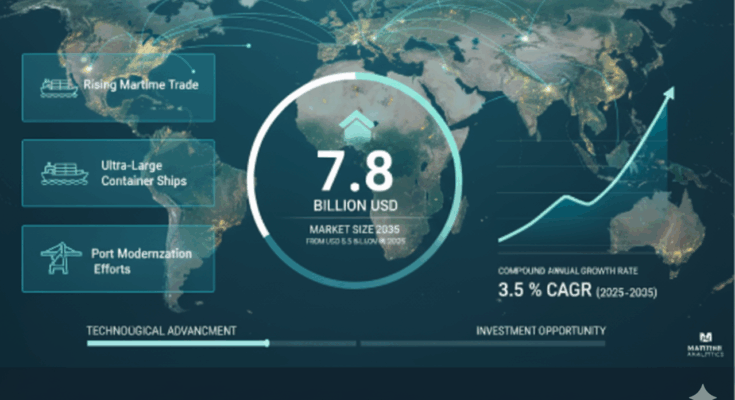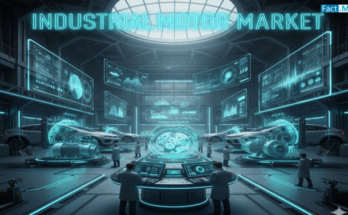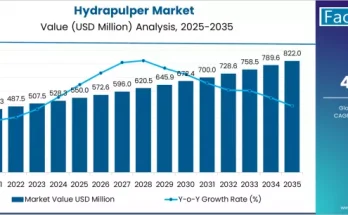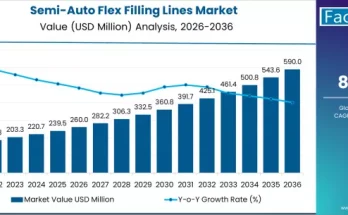The global harbor deepening market is on course to grow from USD 5.5 billion in 2025 to USD 7.8 billion by 2035, expanding at a steady CAGR of 3.5 % during the forecast period. Driven by rising maritime trade, the construction of ultra-large container ships, and intensified port modernization efforts, the market is entering a new phase of technological advancement and investment opportunity.
As global supply chains evolve, harbor deepening has become a critical enabler of competitiveness, enabling ports to accommodate larger drafts, reduce congestion, and strengthen connectivity across global trade routes.
Harbor Deepening Market Key Growth Drivers
1. Global Trade Expansion and Ultra-Large Vessels
The increasing use of container ships with capacities exceeding 20,000 TEU has forced ports worldwide to invest in deeper channels and berths. Harbor deepening projects are now essential to ensure navigational safety, optimize turnaround times, and sustain maritime logistics growth.
2. Urban Waterfront Development and Coastal Resilience
Rapid coastal urbanization has created parallel demand for integrated marine infrastructure. Many governments are coupling harbor deepening with waterfront redevelopment, flood control, and environmental restoration to future-proof coastal economies against climate change.
3. Environmental Regulations and Technological Integration
Modern harbor projects are being re-engineered for environmental compliance and operational efficiency. Companies deploying sustainable dredging technologies, sediment reuse systems, and digital monitoring platforms are capturing an increasing share of public-sector and PPP contracts.
Regional Outlook
North America
Ports across the United States and Canada are executing major deepening initiatives to handle post-Panamax and LNG vessels. Infrastructure upgrades at key ports—including Savannah, Charleston, and Houston—are expanding capacity while aligning with federal safety and sustainability guidelines.
Europe
European nations continue to balance competitiveness and compliance. Expansion projects in Germany, the Netherlands, and Belgium are focused on maintaining the region’s leadership in containerized trade while minimizing environmental impacts through advanced dredging and disposal techniques.
Asia-Pacific
Asia-Pacific remains the fastest-growing region, supported by the rapid expansion of coastal infrastructure in China, India, Indonesia, and South Korea. Government-backed modernization programs and rising export volumes are propelling heavy investment in harbor deepening and dredging services.
Middle East & Africa
The Middle East is transforming into a global logistics hub, with major initiatives in Saudi Arabia, the UAE, and Oman focused on developing deep-draft ports and industrial marine corridors. In Africa, nations such as Nigeria and Kenya are leveraging deepwater projects to enhance trade efficiency and regional connectivity.
Latin America
Ports in Brazil, Panama, and Mexico are expanding to support agricultural exports, energy shipments, and cruise tourism. Public-private collaboration is encouraging long-term dredging concessions and technology transfer partnerships.
Harbor Deepening Market Segmentation Highlights
By Application
-
Capital Deepening: Accounts for the largest market share, involving dredging and channel expansion to enable larger vessel access.
-
Maintenance Deepening: Focused on preserving depth and navigability for existing ports, particularly in sediment-rich coastal zones.
-
Coastal Protection Projects: The fastest-growing application, integrating harbor deepening with flood mitigation, sediment management, and ecological restoration.
By End User
-
Energy and Mining Operators: Require consistent maritime access for bulk material exports and are investing heavily in deep-draft terminals.
-
Government and Port Authorities: Represent the most significant end users, driving national infrastructure upgrades and compliance enforcement.
-
Logistics and Shipping Companies: Increasingly co-investing in harbor projects to ensure cost and time efficiency across their supply networks.
Harbor Deepening Market Challenges and Risk Factors
While the outlook remains promising, the industry faces structural challenges.
-
High Capital Intensity: Major harbor deepening projects can exceed USD 500 million, requiring substantial upfront financing and multi-year execution.
-
Environmental and Regulatory Complexity: Stringent approval processes, marine habitat considerations, and stakeholder engagement often delay implementation.
-
Technical Barriers: Deepening in rocky or high-sediment environments demands precision engineering, advanced dredgers, and real-time monitoring systems.
-
Geopolitical and Economic Volatility: Shifts in trade flows, tariffs, and global economic cycles may affect project prioritization and funding.
Harbor Deepening Market Competitive Landscape
The global market remains moderately consolidated, characterized by the presence of established marine infrastructure and dredging specialists. Key players are focusing on:
-
Sustainable dredging technologies to minimize turbidity and environmental footprint.
-
Automation and digital monitoring, including GPS-guided dredging, sensor-based sediment tracking, and AI-enabled performance analytics.
-
Consortium-based project execution, combining engineering, financing, and environmental expertise.
-
Material reuse and circular operations, converting dredged sediment into construction or reclamation resources.
Leading industry participants include DEME, Jan De Nul Group, Royal Boskalis Westminster, Van Oord, CHEC, Penta Ocean Construction, Hyundai E&C, TOA Corporation, and Dredging Corporation of India. These firms continue to secure long-term contracts and joint ventures across Asia, the Middle East, and Africa—regions expected to account for more than half of new deepening investments by 2035.
Harbor Deepening Market Strategic Outlook for Manufacturers and Contractors
The next decade will redefine harbor deepening as a technologically integrated and environmentally driven industry. Manufacturers and engineering firms that can deliver cost-efficient, sustainable, and digitally enabled solutions will capture the largest market share.
Areas of strategic opportunity include:
-
Development of autonomous and hybrid dredging vessels for continuous operations.
-
Design of adaptive sediment management systems reducing downtime.
-
Integration of GIS-based modeling for precise project planning and environmental forecasting.
-
Partnerships with governments on long-term coastal resilience and port modernization programs.
As ports evolve into smart logistics hubs, harbor deepening will serve as the foundational enabler—bridging maritime trade, digital infrastructure, and sustainable coastal growth.
Browse Full report : https://www.factmr.com/report/1257/harbor-deepening-market



